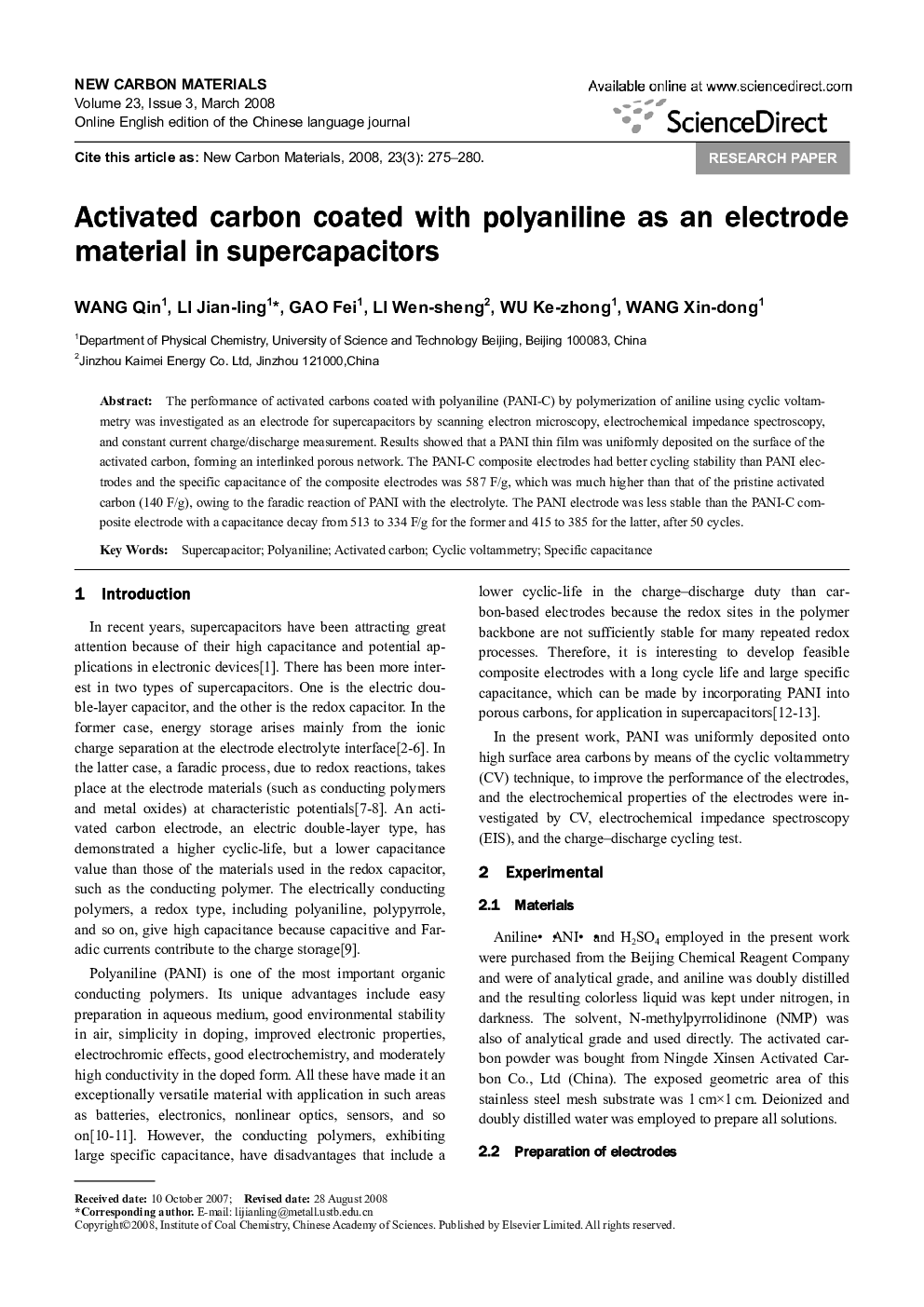| Article ID | Journal | Published Year | Pages | File Type |
|---|---|---|---|---|
| 1558518 | New Carbon Materials | 2008 | 6 Pages |
The performance of activated carbons coated with polyaniline (PANI-C) by polymerization of aniline using cyclic voltammetry was investigated as an electrode for supercapacitors by scanning electron microscopy, electrochemical impedance spectroscopy, and constant current charge/discharge measurement. Results showed that a PANI thin film was uniformly deposited on the surface of the activated carbon, forming an interlinked porous network. The PANI-C composite electrodes had better cycling stability than PANI electrodes and the specific capacitance of the composite electrodes was 587 F/g, which was much higher than that of the pristine activated carbon (140 F/g), owing to the faradic reaction of PANI with the electrolyte. The PANI electrode was less stable than the PANI-C composite electrode with a capacitance decay from 513 to 334 F/g for the former and 415 to 385 for the latter, after 50 cycles.
